This story is part of "The Changing of the Guard," a special section on the leadership changes sweeping the American theatre. Read the rest of the stories here.
Where do you want the field to be in 10 years?
As a new generation of artistic directors start their jobs leading long-running institutions and taking on the role of leaders both in their communities and nationally, we asked them where they hope to see the theatre field a decade from now. These new a.d.s span the nation; some have already started their new jobs, while others begin this summer. All are coming in both optimistic and clear-eyed, and all have very specific visions. Their answers are below.
Let’s Be Less Precious
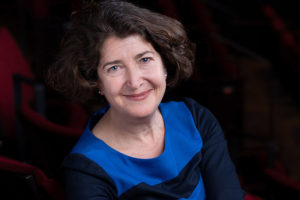
I would love in 10 years for us to not have to categorize leadership by gender and race because we’d be so accustomed to a genuine range of human beings making theatre and running institutions. I’m incredibly honored to be the first woman to run Hartford Stage and impressed with how many theatres are selecting, not new voices, because none of us are new, but are changing the model of leadership at their organization. In 10 years, this will have continued and we no longer think of these categories.
I also do hope that the preciousness of attending a theatre event, which involves dress code and ticket prices and the privilege of being in these buildings—I hope we can have just a little more immediacy to our relationships to these large institutions. That we can have this sense of, let’s just see what’s going on there, let’s go buy a ticket, let’s just go see a play.
In this moment of extraordinary work on every possible screen you own, that there’s no reason to leave the house for artistic content. We’ve sidelined theatre a lot. It used to be theatres relied on subscribers, and subscriptions have been dropping around the country. We’re now title-based. Basic belief in an institution is dropping. I would love in 10 years for a community to treasure its regional theatre, the theatre in the center of its city, and for it to feel as important as its sports stadium. It would be wonderful to be more central to a community’s life.
Melia Bensussen, Hartford Stage
Empathy and Well-Being
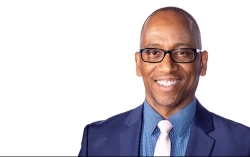
Obviously to be much more reflective of the America that we live in—that there is recognition of inclusivity in all walks of human activity, in all stations of our systems, our institutions, our organizations. Compassion, empathy—these are things that are about a deeper engagement with human activity in a much more effective way. They aren’t sentimental, emotional tripe; they lead to fiscal well-being as well as a psycho-social well-being, as well as physical well-being. These things intersect, and my hope is in 10 years, we’re closer to having a more nuanced critical thinking-and-doing relationship to those realities, through art, through culture, through civic engagement. We as arts organizations and artists are deeply in the center of all of that.
Robert Barry Fleming, Actors Theatre of Louisville:
The Magic in Multitasking
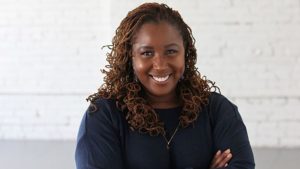
The theatre of the 21st century will have to be inclusive for its survival. Which means our audiences must reflect the diversity of our country ethnically, racially, in age, and in gender identities. Our theatres, from the front of our houses to the back of our stages, must demonstrate equality. From our staff offices to our custodial and maintenance offices and our executive suites, the theatre of the 21st century must become reflective of the macrocosm that is America.
Since the end of the 20th century, we have continued to focus on affecting one area at a time. Theatres that wanted to see more people from a certain demographic in their audiences would put that demographic on their stages, thinking that by simply producing a play about a certain kind of experience, the people who shared that experience would miraculously appear in their audiences. However, they neglected to pay attention to what it was like for those performers to enter these predominantly white institutions which did not reflect them or their experiences. They did not pay attention to the experience of the audiences they were trying to attract,who were entering spaces that may not have understood how to welcome them. And they weren’t consistent in their offerings so that people could feel more at home over time.
This is still the practice at many of our theatres today. One, or if we are lucky, two shows per season reflect experiences outside of the “status quo.” That single offering is meant to attract audiences who do not reflect the “status quo.” This formula will not be able to attract the audiences we need to walk through our doors in the next 10 years. We must start now to begin to shift the paradigm of producing, audience engagement, and leadership all at once.
Nataki Garrett, Oregon Shakespeare Festival
Plays Are the Heartbeat

I want it to feel euphoric. I want it to feel inclusive. And I want it to feel vibrant. I feel the model of the National Theatre in London, which is a building that’s open from the morning— it’s a kind of mini-village in which plays are the heartbeat of that village, and it feels like an environment where everybody is welcome. That’s where I want Shakespeare Theatre to go toward. We all feel this is a classical theatre for now.
Simon Godwin, Shakespeare Theatre Company, Washington, D.C.
Rising to the Challenge
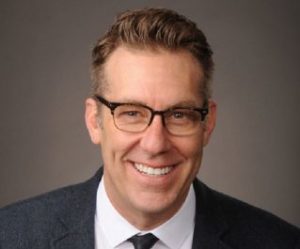
I want our theatres be paved in thousand dollar bills. [Laughs] I want the field to weather this bumpy financial storm so we’re able to take risks that appeal to our artists as much as they appeal to people we want to see and support the show. The things we do, we’re doing because we have artists that want to be challenged. In 10 years, I’d like us all to be taking risks, to be healthier financially, and to be deeply embedded in the conversations with our community. The Liviu Ciulei quote, “A community can be measured by the questions its theatre asks,” is one I think of a lot. It implies that the theatre is vital.
David Ivers, South Coast Repertory
Ubiquitous and Inevitable
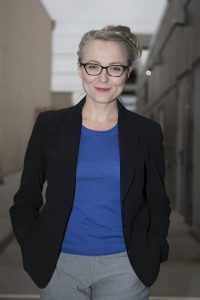
I want theatres across the country to be both the place and the means that we connect, with our families, with our neighbor, with people different from us. I hope in 10 years that because of the shift we’re making now, and the incredible courageous thinking that so many theatremakers are testing now, that theatre becomes ubiquitous on how we relate and connect with one another.
People with a larger macro view than me have posited that this tidal shift in leadership is inevitable and it’s going to be historic. I definitely feel like this time is one of the most significant moments of my artistic life. I do think that is possibly true for us as a field. I hope so. I hope to be a part of that, to serve that.
Marya Sea Kaminski, Pittsburgh Public Theatre
Build Big Muscles
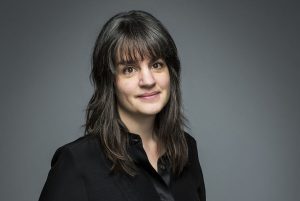
I’d love audiences to be more diverse—and that’s in terms of age, and culturally. I feel that there’s huge, exciting American playwriting going on, and there are amazing directors out there. I feel ACT has the ability to really help artists build muscles, because I have so many production opportunities, whether it’s the young conservatories, bringing in directors to work with teenagers, or commissioning a playwright to write for our MFA conservatory and making sure that play is produced professionally.
I have a multiplicity of stages. I’m really excited about continuing my relationship with “New York” artists but giving them a bigger playground. Is there a choreographer out there who wants to work in a Broadway-size house? It’s about building artistic muscle and also really embracing this dynamic city and putting on stories this dynamic city wants to see. And making sure I give them access. Let’s see what we can do. I’m in conversation with a lot of fellow brand new artistic directors. That seems to be the mission. And the first step is talking about it, and then we get to start to do it.
Pam MacKinnon, American Conservatory Theater
Bring Back the Excitement
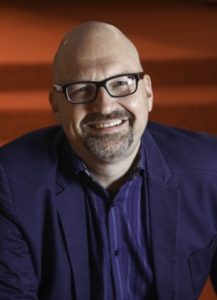
I want there to be a lot more variety. A friend of mine used to say, “When I go to the museum, when I go to the Met, I don’t limit myself to French Impressionists. I walk through the entire museum and I look at all the different paintings from all over the world.” On some level I feel like the American theatre for the past 30 years has been exclusively one kind of theatre from one group of people. With a diversity of identity and a diversity of form, we can really help stretch our audience’s idea of what theatre is, what kind of stories we can tell. The American theatre can be much more dynamic. I think there’s so much room for growth.
When I was in high school, I would go to the Guthrie and watch JoAnne Akalaitis direct something, or Richard Foreman, Robert Woodruff, Bill T. Jones. Really cool, mind-blowing, exciting theatre. And on TV there was “Growing Pains” and “Family Ties.” If someone had asked me, do you want to work in TV or theatre? There was no question—theatre was this cool, amazing thing and TV was deadly boring and saccharine and stupid. Well, now TV is so exciting. We have all these wonderful writers writing for TV and they have great experiences and they’re getting paid really well. So over the past 30 years, TV has become really exciting and regional theatre has become more boring. So I feel like with this leadership change, this next generation can really help theatre become more dynamic and exciting. A lot of us have been running little theatres and doing really cool work. Trying to bring that cool work on a bigger scale will be an exciting challenge for the next few years.
Rob Melrose, Alley Theatre
Show Our Work
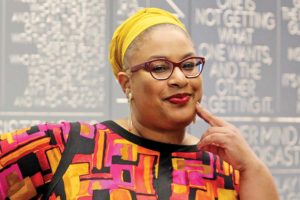
I would love for there to be a real sense of transparency within our field. I do feel like this new cohort can help build a practice of that—we cannot just share with each other but also share with our local communities, share on a national level what the challenges are that we’re facing, and how we’re addressing them. And the discourse on how the art is made, all the murky parts of how theatre is made becomes more clarifying, transparent and open. The table where decisions are made looks like America; the spectrum of art on our stages is reflected in the boardrooms and behind closed doors where decisions are made.
I would hope that we see executive leadership opportunities far and wide for everyone—that there isn’t just one African American woman running a LORT theatre or one Latinx woman running a LORT theatre. That we have evolved in 10 years where that part of the conversation feels more distant that it currently does.
Gay, straight, trans, non-binary, female, Asian, Black, Native American, you name it, we exist within this field. We are creating art that is meaningful, we have voices that deserve to be heard and access to the table where those decisions are made. In 10 years down the road, what I want is an art community that embraces that idea, that is reflective of that truth and that is transparent in the process and in the way that we’re solving and addressing, or failing to solve and address, the fundamental issues of our field. That would feel like a huge win for this next generation, if we can create an environment that allows the level of honesty, transparency, and equitable space in the conversation. I think that would be a great cultural shift for the field and one that will open the doors and possibilities for the generation coming behind us.
I enter every space thinking how I’m going to leave it. I enter every space thinking what am I building to be the floor for the person coming ahead. Michael Wilson, the former artistic director at Hartford Stage, when he was leaving and Darko Tresnjak was coming in, said, “My ceiling will be Darko’s floor.” That has stayed with me because I fundamentally believe that’s what I’m working towards. My job is to build capacity, to build impact and effectiveness and quality, so that whenever I leave, whoever comes in next has all that I built to stand on and build up from.
Hana Sharif, Repertory Theatre St. Louis
Support, Not Scarcity
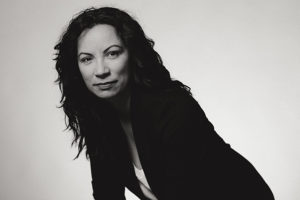
I think that it would be easy to say more money or resources! But I don’t know if I believe that’s it. I think in a broader sense, being surrounded by a team of stakeholders that are willing to learn, and to be constantly learning, feels to me like the most critical ingredient for success. I want to call out my use of words here—what I’m not saying is “room to fail.” That’s the phrase that gets thrown around far too often, and it reeks of scarcity mentality and has a negative connotations. I don’t need room to fail; I need people around me who are willing to learn with me and look at the successes and missteps and learn from it all and are willing to get better. If we’re aligned in that spirit, then I think we can’t fail.
If all goes well in 10 years, me and my friend Hana won’t be such an anomaly. We will be such old news. And also if all goes well, in a decade I feel like we will have rebalanced the relationship between the regional theatre and the New York theatre ecosystem, and we will be supporting, particularly, artists of color at a level that has us all sort of sitting back and being like, we did it!
Stephanie Ybarra, Baltimore Center Stage


